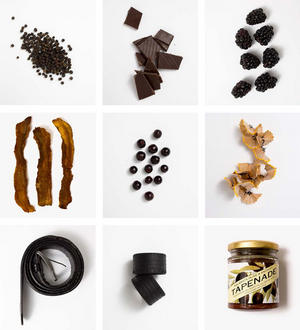2018 Mullineux, Syrah, Swartland, South Africa
- Red
- Dry
- Full Bodied
- Syrah
Ready, but will improve
- Neal Martin MW
- 92/100
- James Suckling
- 92/100
Product: 20181157691
75 cl Bottle
Description
The 2018 Syrah contains 90% whole bunch and was matured for 14 months in 15% new oak, used wood and foudre. It has a lively bouquet of brambly red berry fruit, white pepper, clove and cola scents that gain intensity with aeration. The palate is medium-bodied with grainy tannins. This is quite a sinewy Syrah, grippy in the mouth, revealing hints of licorice and Japanese nori toward the saline finish. Excellent.
Drink 2023 - 2036
Neal Martin, vinous.com (April 2021)
Colour Red
Sweetness Dry
Vintage 2018
Alcohol % 13.5
Maturity Ready, but will improve
Grape List Syrah
Body Full Bodied
Producer Mullineux & Leeu Family Wines
Critics reviews
Neal Martin MW 92/100
The 2018 Syrah contains 90% whole bunch and was matured for 14 months in 15% new oak, used wood and foudre. It has a lively bouquet of brambly red berry fruit, white pepper, clove and cola scents that gain intensity with aeration. The palate is medium-bodied with grainy tannins. This is quite a sinewy Syrah, grippy in the mouth, revealing hints of licorice and Japanese nori toward the saline finish. Excellent.Drink 2023 - 2036Neal Martin, Vinous.com.com (Apr 2021)
Drink 2023 - 2036
James Suckling 92/100
Savory nose of blackberries, thyme, cracked pepper, iodine and dried oysters. Medium-bodied with firm, tightly knit tannins and bright acidity. Vibrant and peppery. Black-tea notes to close. Unfiltered. Drink now or hold.james_suckling, jamessuckling_com (Nov 2021)
Drink 2023 - 2036
About this wine

Syrah/Shiraz
A noble black grape variety grown particularly in the Northern Rhône where it produces the great red wines of Hermitage, Cote Rôtie and Cornas, and in Australia where it produces wines of startling depth and intensity. Reasonably low yields are a crucial factor for quality as is picking at optimum ripeness. Its heartland, Hermitage and Côte Rôtie, consists of 270 hectares of steeply terraced vineyards producing wines that brim with pepper, spices, tar and black treacle when young. After 5-10 years they become smooth and velvety with pronounced fruit characteristics of damsons, raspberries, blackcurrants and loganberries. It is now grown extensively in the Southern Rhône where it is blended with Grenache and Mourvèdre to produce the great red wines of Châteauneuf du Pape and Gigondas amongst others. Its spiritual home in Australia is the Barossa Valley, where there are plantings dating as far back as 1860. Australian Shiraz tends to be sweeter than its Northern Rhône counterpart and the best examples are redolent of new leather, dark chocolate, liquorice, and prunes and display a blackcurrant lusciousness. South African producers such as Eben Sadie are now producing world- class Shiraz wines that represent astonishing value for money.
Find out more

Mullineux & Leeu Family Wines
Mullineux & Leeu Family Wines is one of the stand-out producers in South Africa's budding Swartland region. Winemakers Chris and Andrea Mullineux’s ambition is to bottle wines that are a true expression of the Swartland, and all steps of their winemaking process are taken with this in mind. They work closely with a select group of growers who follow sustainable, reasoned farming practices, as well as owning vineyards at their Roundstone Farm in Riebeeksrivier. In the cellar, apart from minimal amounts of sulphur, nothing is added to or removed from the wine. They do not make use of any yeasts, acids, tannins, enzymes, or fining and filtering agents. “Leeu” (Afrikaans for “lion”) was added to the name recently to recognise the contribution of a new investor to the project. Apart from their wonderful Syrah, Chenin Blanc-based white blend and a super-rich Straw Wine made from air-dried Chenin Blanc, fermented and matured in old barriques, Mullineux now has a range of spectacular single-terroir Syrah and Chenin Blanc wines, each of which illustrates the amazing potential of the differing Swartland soils. Volumes of the single-vineyard wines are tiny, so availability is extremely limited.
Find out more
